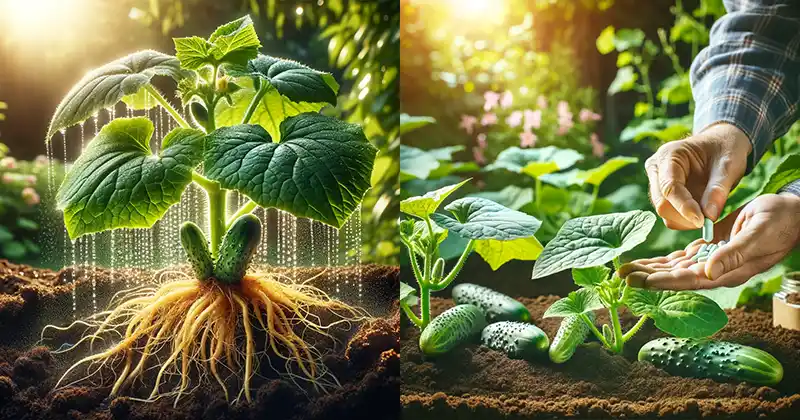In the pursuit of a flourishing garden, every enthusiast seeks innovative methods to boost plant health and productivity. Among the myriad of strategies lies a gem not widely discussed but incredibly potent—glycine. This simple amino acid, often overshadowed by more complex fertilizers, holds the key to unlocking the full potential of your plants, especially cucumbers.
What is Glycine?
Glycine is a non-essential amino acid that plays a critical role in plant physiology. It is pivotal in the biosynthesis of chlorophyll, the lifeblood of plants that allows them to convert sunlight into energy through photosynthesis. Beyond its role in chlorophyll production, glycine influences several vital processes, including the synthesis of proteins, the regulation of plant growth hormones, and the enhancement of nutrient absorption.
A Catalyst for Growth and Health
Glycine serves as a catalyst for growth and vitality in plants. It aids in the conversion of microelements in the soil, such as iron and magnesium, into chelated forms that plants can easily absorb. These elements are crucial for chlorophyll formation, directly impacting the plant’s ability to photosynthesize efficiently. When plants access these nutrients readily, they exhibit robust growth, vibrant leaf coloration, and improved overall health.
Benefits of Glycine in Cucumber Cultivation
Cucumbers, in particular, can greatly benefit from glycine application. This amino acid has been shown to:
- Enhance Growth Indicators: Research indicates that applying glycine to crops like cucumbers can significantly promote growth, leading to increased plant height, stem diameter, and leaf area. These growth indicators are essential for a healthy, productive plant.
- Stimulate Chlorophyll Concentration: By increasing chlorophyll biosynthesis, glycine ensures that cucumber plants have a higher photosynthetic capacity, vital for energy production and growth.
- Boost Immunity and Stress Resistance: Glycine enhances the plant’s natural defense mechanisms, making them more resilient to environmental stress, pests, and diseases.
- Improve Fruit Yield and Quality: A direct consequence of healthier, more vigorous plants is an improved yield of cucumbers, both in terms of quantity and quality.
How to Apply Glycine to Your Cucumbers
Incorporating glycine into your gardening routine is straightforward. A practical approach involves dissolving pharmaceutical-grade glycine tablets—typically 100 milligrams per tablet—in water to create a solution. For optimal results, two tablets per liter of water is a recommended concentration. This solution can then be applied in two ways:
- Foliar Spray: Spraying the glycine solution directly onto the leaves allows for quick absorption through the stomata, directly benefiting the chlorophyll production and overall health of the plant.
- Root Drench: Watering the plants with the glycine solution enriches the soil around the roots, improving nutrient uptake and bolstering root development.
Embracing the Glycine Advantage
The integration of glycine into your gardening practice is a testament to the power of simple, science-backed methods to revolutionize plant care. By understanding and applying these principles, gardeners can witness a notable transformation in their cucumber crops and beyond, paving the way for a greener, more bountiful garden.
As we continue to explore and embrace these innovative practices, the potential for sustainable, efficient gardening becomes increasingly attainable. Glycine, with its profound impact on plant growth and health, stands out as a prime example of how a small change in our gardening approach can lead to significant rewards.
